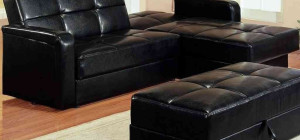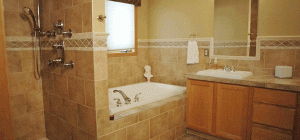Home renovations can be rewarding because they give you the chance to put your stamp on a previously unremarkable space. However, it’s easy to get carried away in the planning process and make poor design choices that could decrease your home’s value or make living in it less enjoyable.
As you embark on an interior overhaul, keep these common pitfalls in mind—and dodge them!
Disregarding Functionality
The form should follow function. Sadly, many homeowners get this backward, compromising practicality for pretty. Avoid this by prioritizing how you live in a space. For instance, a dining nook should accommodate traffic flow from the kitchen; a living room layout should promote conversation; if you entertain often, ensure you have adequate, accessible seating.
Analyze your lifestyle needs, then design around them.
Overlooking Lighting
Lighting can make or break a room as it sets the mood and showcases the decor. Yet, it’s easy to underestimate its impact. Avoid solely relying on overhead fixtures, which cast unflattering shadows, and instead incorporate multiple lighting layers (accent, task, and ambient) to brighten a space appropriately.
Additionally, install dimmers for flexibility. With thoughtful illumination, your interiors will literally shine.
Disrespecting Architectural Features
It’s tempting to alter a room’s original architectural details to suit your taste; but these features often give a home character and charm! Vintage moldings, door frames, built-ins, and hardwood floors add interest, value, and a sense of history.
Enhance them with your design choices instead of concealing or removing them. For example, paint trims a crisp, bright white to contrast with moody modern rugs.
Not Having a Plan
It’s tempting to impulse-buy trendy decor or make style decisions on the fly. Resist this temptation! Interior design is complex: and all elements—fixtures, lighting, furniture, color, accessories—should work harmoniously together.
Without a master plan, a room can quickly become a discordant mess of mismatched pieces. Without a plan you are also not likely to be able to hire in trades that you need, such as plumbers, electricians, or decorators. Some trades get booked months in advance and need to know how long they will be on-site with you so that they can plan their work accordingly.
Neglecting Texture
A room shouldn’t just look sensational—it should feel that way too. Many renovators focus solely on visual appeal, ignoring the tactile elements; yet varied textures enliven a space, therefore creating depth and dimension.
Try layering natural linens, cozy knits, plush pillows, nubby rugs, and softwoods, and seek out pieces with rich finishes like velvet, leather, or linen.
Disregarding Scale
“Go big or go home” does not apply to interior design. Oversized furniture overpowers a room, making it feel claustrophobic. On the other hand, undersized pieces look oddly adrift in a large area. Therefore, carefully evaluate your dimensions, and select items suited to the room’s proportions.
As a rule of thumb, leave at least 18 inches of walking space around beds and seating; coffee tables should be two-thirds the sofa length. Errors in scale impart a disjointed, sloppy look.
Neglecting Sustainability
Eco-conscious remodeling is a win-win: it’s better for the planet and your wallet. Yet many homeowners overlook sustainability. Seek out quality vintage and antique finds to avoid new production waste.
In addition, use toxin-free paints and stains; install energy-efficient fixtures and appliances; opt for sustainably sourced woods; and choose natural fabrics such as organic cotton, linen, and wool.
Overlooking Storage Solutions
Pretty decor doesn’t always equate to functional decor—a beautiful space should also meet your organizational needs. Evaluate how you’ll use an area and incorporate customized storage such as floating shelves and built-in cubbies, which can help to streamline clutter in a living room.
Other ideas include a mudroom with bins, hooks, and hampers; adding drawers to a media console; and using baskets under coffee tables. With clever solutions, every item has a designated home, so your rooms remain tidy.
Ignoring the Power of Color
Color wields a significant influence in setting the mood and atmosphere of a space, yet it is often underutilized or misapplied during renovations. Avoid this pitfall by thoughtfully incorporating color into your design. Bright hues can energize a room, while more subdued shades tend to create a serene environment.
Color isn’t confined to the walls—it extends to furniture, drapes, rugs, and art pieces. Strive for a balanced palette that complements the room’s purpose. For example, calming blues or greens work well for bedrooms, while warmer tones might suit a lively dining area.
Don’t forget to consider the effect of natural and artificial lighting on color perception. With a considered approach to color, your interiors will exude an appealing ambiance, therefore enhancing your everyday living experience.
Final Thoughts
These pitfalls are easily avoidable on the path to creating a home that is a reflection of your personality and values. Don’t try to rush through interior design or underrate how difficult it is—spend some time reading up on reliable products and sound design practices.
If you thoughtfully assess how you inhabit your home, and with strategic renovations guided by functionality, you’ll love living in your beautifully optimized spaces.







![Are You a Secret Hoarder? [Infographic]](https://lerablog.org/wp-content/plugins/wp-thumbie/timthumb.php?src=http://lerablog.org/wp-content/uploads/2014/11/Nation-of-Clutter-IG-v21.png&w=300&h=140&zc=1)



